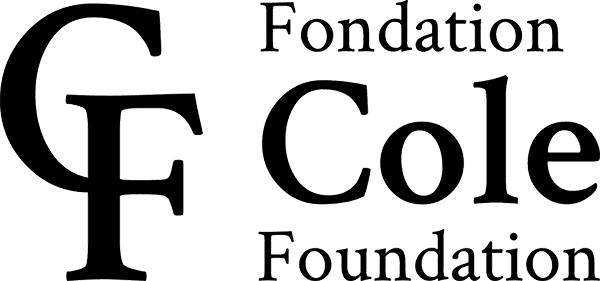How is Re:Incarnation inspired by the spiritual tenets of the Yoruba, the ethnic group you come from?
I was born in Nigeria, in Lagos—a cosmopolitan, vibrant, capitalist city that feels like an African version of New York. Yoruba spirituality isn’t very present in Lagos; you have to go deeper into the country. I became interested in Yoruba culture after I realized that race had never been part of the conversation for me in Nigeria. There are over 200 million Black people in Nigeria, but it was only when I went abroad that it dawned on me that I was Black. Blackness is a construct that exists only in the presence of whiteness.
I left a place where I was the centre of the world, where I was entirely myself, acting on my own intuition, my hopes, my ambitions, my own trauma, and as I toured around America and Europe, I discovered that others had this constant need to project identity issues onto me. It was invasive, and I needed some air, I needed to re-centre myself, to go back to my roots, to the Yoruba spirituality that’s at the heart of who I am. In Yoruba philosophy, time is cyclical, non-linear. The future and the past aren’t in conflict, which is interesting in contemporary art, because “contemporary” by definition means “with time”.
All my work becomes meaningful in the context of time. I’m not making anything up, just telling the story of my heritage, of what was done before me. Contrary to Christian thought, Yoruba philosophy believes in reincarnation, which means that there is no distance between the space in which the living exist, the space of the ancestors who’ve passed away, and the space of the unborn, who belong to the spiritual world. Re:Incarnation is inspired by these three spaces, which coexist simultaneously: the space of life, the spiritual space, and the space of the ancestors. It’s another way of talking about reincarnation: birth, death, rebirth.
One of the sections of Re:Incarnation takes place in the world of the dead. What is the realm of the dead in Yoruba culture?
The Yoruba people don’t think of death as finality. It’s not feared, nor is it an end or an apocalypse, as it’s seen in the West. For us, death is an opportunity to be reborn, just like after going through something traumatic people try to avoid reliving that experience by creating a new story. We say that there can be no success without failure, without some kind of breach. And we can accompany someone in the transition toward death, which in itself is a process.
When I started looking at what it means to go through the state of dying from an artistic standpoint, death was a concept, untill we lost Love Divine, one of the main characters in the piece during creation. Death wasn’t abstract anymore, it was concrete, and in order to heal we needed to bring death with us. The red light on stage is a reference to her hair colour.
There are ten dancers onstage, but for me there are eleven, with her invisible presence. We chose not to replace the scene with her solo for instance. Instead, we use the moment to invite her in every night and include her presence in the piece.
Would you say that Re:Incarnation is an encounter between the energy of traditional rhythms and a new generation of Nigerian performers?
I became interested in the transitional generation between Millennials and Generation Z, who are connected on social media, and who create a kind of cultural uniformity that ends up erasing individuality. But I realized that there was a conversation between young people in different cities in Africa about aesthetics, about music, dress codes, dance styles, and so on. Because of social media, they’re learning from one another—it’s a living, breathing remix. And without knowing it they’re evoking the codes and the gestures of the past—it’s in the multiple expressive ways they use the body, in the makeup, the costumes, the scenery, the movement, the mimicry.
Dance has the capacity, after a long period of amnesia, to remember through bodily memory using contemporary codes. We recruited almost all the performers for the show on Instagram: they’d been filming themselves with their own mobile phones. I chose about thirty of them and coached them in consciousness and awareness development.
For me, there are three levels of consciousness: what you know that you know, what you know that you don’t know, and what you don’t know that you know. Their bodies knew things they were not aware of, and I wanted to bring them to that consciousness, to go back in time, to imagine another future. For the Yoruba, performance is about remembering, and the essential component of that remembering is healing. Being able to heal, to mediate between the here and there, now and then and re-establish harmony and order, in order to move on to the next stage, which is in line with the idea of reincarnation.
I invited the dancers to take part in body memory exercises so that they could find their own original language. When each person is solid within themselves, then the group becomes extraordinarily powerful.
How is Africa today an inspiration for you for this piece in particular?
I think of the African continent as a laboratory for humanity. We’ve lived through natural resource exploitation, a traumatic history, human migration, the exploitation of the body, the erosion of education, of a people’s spirituality, political structures, institutions, and we’ve experienced extremely violents events like colonialism, slavery, apartheid, neo-colonialism, not to mention internal wars, dictatorships, civil wars, and genocide.
Sixty-five percent of the population of the continent is now under the age of thirty.
There is also huge creative energy, joy, a will to live, to rewrite the past and remember the future. If Africans have been able to go through all of that and still retain a joie de vivre, surely they must have something to teach us. I create what I see on the African continent without any judgment. The dancers bring what their bodies feel and has to say about our world today.










